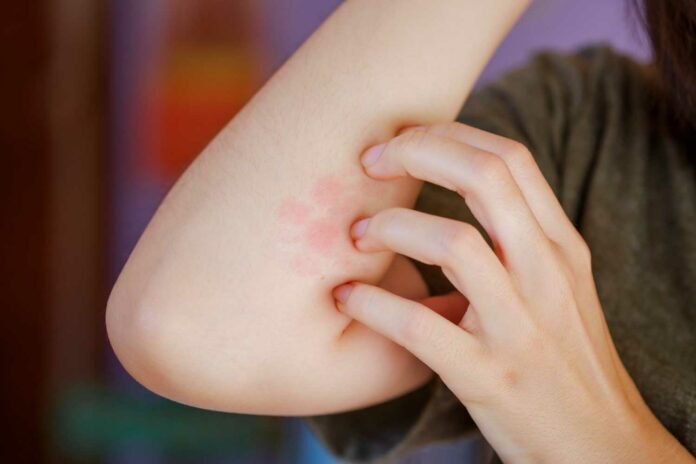Researchers have discovered why skin sores from cutaneous leishmaniasis don’t hurt. By studying the lesions on mouse skin, they found that the parasites causing the disease alter how we feel pain. This is likely a strategy to avoid early treatment and help the parasites survive.
Abhay Satoskar, senior author of the study and professor of pathology at The Ohio State University College of Medicine, said, “No one knows why these lesions are painless – but it has been thought that the parasite somehow manipulates the host physiological system. Based on our data, something the parasites do triggers pathways that suppress pain. How they do that, we’re still investigating.”
The research on this parasitic disease, affecting a million new patients yearly, may not only improve our understanding but also pave the way for new pain medications without narcotics. Researchers believe that the molecules produced by the parasite could be used as painkillers for various health issues. The study was recently published in the journal iScience.
Researchers have been puzzled by the lack of pain in leishmaniasis lesions for years. Leishmaniasis sores are not itchy or sore, unlike other blisters from conditions like chickenpox or infections. Researchers conducted experiments on mice infected with Leishmania mexicana, the parasite causing the disease in the Americas.
Using mass spectrometry, they identified molecules associated with pain suppression in the lesions. These molecules are linked to blocking pain perception, and some pathways are related to the brain’s endocannabinoid system, known for its role in physiological processes, including pain response. Similar changes were observed in cell-culture experiments in infected immune cells where the parasites reside.
The parasites use specific metabolites as food molecules to help them multiply. However, researchers are still unsure why specific pathways that reduce pain are not increased in the cells where the parasites live. According to Dr. Satoskar, the infection affects the cells directly or indirectly. It creates an environment that produces these metabolites.
This discovery is the first step in understanding why these lesions have no pain. The following substantial question is determining what triggers these pathways: the parasite itself, something the parasite does to the host cell, or a combination of both. There’s still much to learn about how these processes work.
Satoskar is also leading an effort to create a standardized skin test for immunity to Leishmania donovani, the parasite causing a severe form of visceral leishmaniasis. This type can be deadly if not treated and affects the organs. The skin test, similar to one for tuberculosis, uses an antigen called leishmanin. A positive result indicates exposure to the parasite and immune protection against further symptoms.
This test is crucial for disease monitoring in heavily affected regions. It will be essential for testing the leishmaniasis vaccines the team has developed in phase 3 clinical trials. The test will also aid in detecting sporadic cases in the southern United States where no current tests are available, helping study exposure in endemic regions, including the U.S.
Satoskar said, “This is a critical test in the field to understand who is exposed to this disease or not. For many stakeholders going into a community to conduct surveillance, knowing who is immune and who is not is essential so they can appropriately deploy their limited resources for disease control.”
Leishmanin skin tests, which were once available, are no longer around. Following strict guidelines, the research team developed a new version of the antigen for these tests. They tested it in hamsters, a model for human visceral leishmaniasis, to ensure that the skin test prompts the expected immune response to both infection and vaccination.
Dr. Satoskar mentioned that this data could help expedite the approval process for Leishmania vaccines currently in development, aiming to meet the global community’s needs.
In conclusion, researchers are exploring the potential of a parasite’s ability to alleviate pain. By studying the metabolic changes induced by the parasite in causing cutaneous leishmaniasis, they hope to unlock new insights into pain suppression.
This understanding sheds light on the mystery of painlessness in leishmaniasis lesions. It opens avenues for developing non-narcotic pain medications. Furthermore, the research has broader implications, suggesting that the molecules produced by the parasite could be explored as potential painkillers for various health conditions.
Journal reference:
- Greta Volpedo, Timur Oljuskin, et al., Leishmania mexicana Promotes Pain-reducing Metabolomic Reprogramming In Cutaneous Lesions. iScience. DOI: 10.1016/j.isci.2023.108502.
